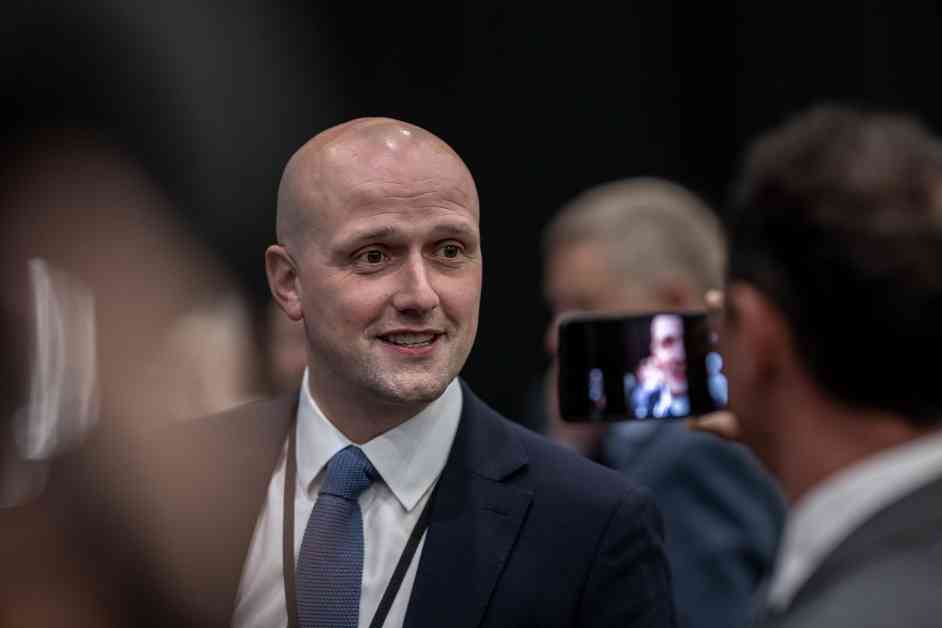Stephen Flynn, the SNP Westminster leader, has called for a “grown-up discussion” between politicians to establish a clear “pathway” to Scottish independence. With polls indicating a split of 50/50 among Scots on the issue of independence, Flynn emphasized the need for a convention to outline the terms through which the people of Scotland can express their views.
Flynn’s call for dialogue comes as Scotland approaches the tenth anniversary of the 2014 independence referendum, where the No side emerged victorious with a 55% to 45% majority. Despite the outcome of the referendum, there have been persistent calls from the SNP for a second vote over the past decade.
Successive prime ministers have rejected demands from the Scottish Government for a Section 30, which would grant the necessary powers for a plebiscite. In 2022, then-First Minister Nicola Sturgeon sought a ruling from the Supreme Court on the legality of Holyrood holding its own vote without Westminster’s consent, only to be told that the Scottish government cannot proceed with an independence referendum without UK government approval.
The SNP’s latest stance was to engage in negotiations on independence if they secured a majority of seats in the general election. However, they fell short, winning only nine seats compared to the 48 they had secured in 2019. Despite the decline in seats, recent polls continue to show support for independence hovering around 48%.
Flynn stressed the importance of understanding the pathway to delivering a referendum, particularly in a climate where support for independence remains evenly split. He highlighted the need for a mature discussion between those in favor of the union and those supporting independence to chart a way forward.
The SNP leader emphasized the need for key figures from the UK Government, Scottish Government, unionist, and nationalist parties, along with representatives from civic society in Scotland, to come together and devise a framework that allows the Scottish people to express their views on their future. He underscored the necessity for serious discussions among politicians to reach a conclusive solution that benefits the Scottish population at large.
Drawing a parallel with the Canadian Clarity Act of 2000, which outlined conditions for negotiating the secession of a province following the 1995 Quebec referendum, Flynn highlighted the importance of establishing a similar framework in Scotland.
Subheadings:
Challenges in the Independence Debate
While Flynn’s call for a “grown-up discussion” on Scottish independence has garnered attention, the road to independence faces several challenges. The divergent views within and outside the SNP, coupled with the complex legal and political landscape, make the pathway to independence a contentious issue.
One of the primary challenges lies in garnering widespread support for independence, as recent elections have shown a lack of overwhelming majority in favor of secession. The SNP’s failure to secure a majority of seats in the general election underscored the need for a cohesive strategy to rally support for independence across Scotland.
Moreover, the legal complexities surrounding the process of holding an independence referendum without Westminster’s consent present a significant hurdle. The Supreme Court ruling that the Scottish government cannot proceed with a plebiscite without UK government approval has further complicated the path to independence.
Impact on Scottish Society
The ongoing debate on Scottish independence has reverberated across Scottish society, sparking discussions on identity, governance, and the future of the nation. The calls for a “grown-up discussion” on independence have prompted individuals from all walks of life to engage in debates and conversations about Scotland’s constitutional future.
The uncertainty surrounding the independence debate has also impacted businesses, with the CBI chief highlighting a lack of focus on independence within Scottish business circles. The economic implications of independence, including trade relationships, currency, and regulatory frameworks, have become key points of contention in the broader discussion on Scotland’s future.
Moreover, the divisive nature of the independence debate has raised questions about unity and cohesion within Scottish society. As political parties and civic organizations navigate differing views on independence, the need for a constructive dialogue that bridges the gap between unionist and nationalist factions has become increasingly apparent.
Path Forward for Scottish Independence
Amidst the challenges and complexities surrounding the independence debate, finding a clear pathway forward for Scottish independence remains a pressing issue. The need for a comprehensive framework that outlines the terms and conditions for a referendum, while addressing legal and political obstacles, is paramount in advancing the cause of independence.
Key stakeholders, including political leaders, legal experts, and representatives from civic society, must come together to chart a way forward that reflects the aspirations and concerns of the Scottish people. The establishment of a transparent and inclusive process for determining Scotland’s constitutional future is essential in fostering trust and confidence in the independence movement.
As discussions on independence continue to evolve, the importance of engaging in constructive dialogue, building consensus, and addressing the concerns of all stakeholders cannot be overstated. By fostering a spirit of collaboration and cooperation, Scotland can navigate the complexities of the independence debate and pave the way for a future that reflects the will of its people.
In conclusion, Stephen Flynn’s call for a “grown-up discussion” on Scottish independence underscores the need for a comprehensive and inclusive approach to addressing the challenges and complexities surrounding the issue. By engaging in meaningful dialogue, fostering unity, and charting a clear pathway forward, Scotland can navigate the road to independence with confidence and determination.
































